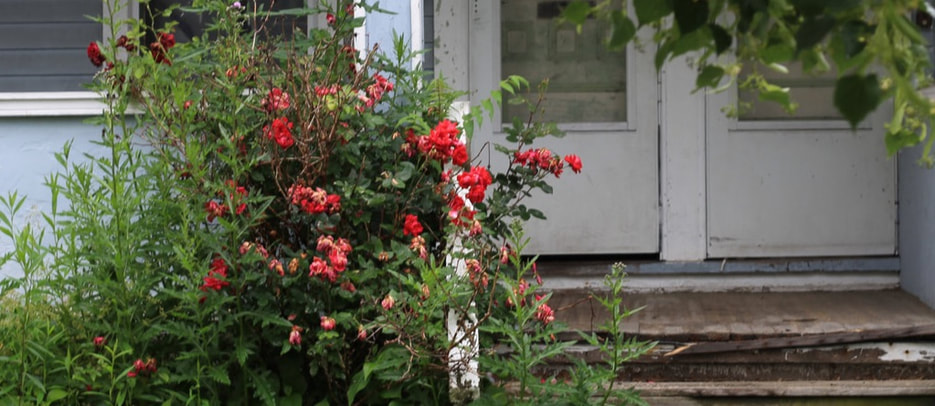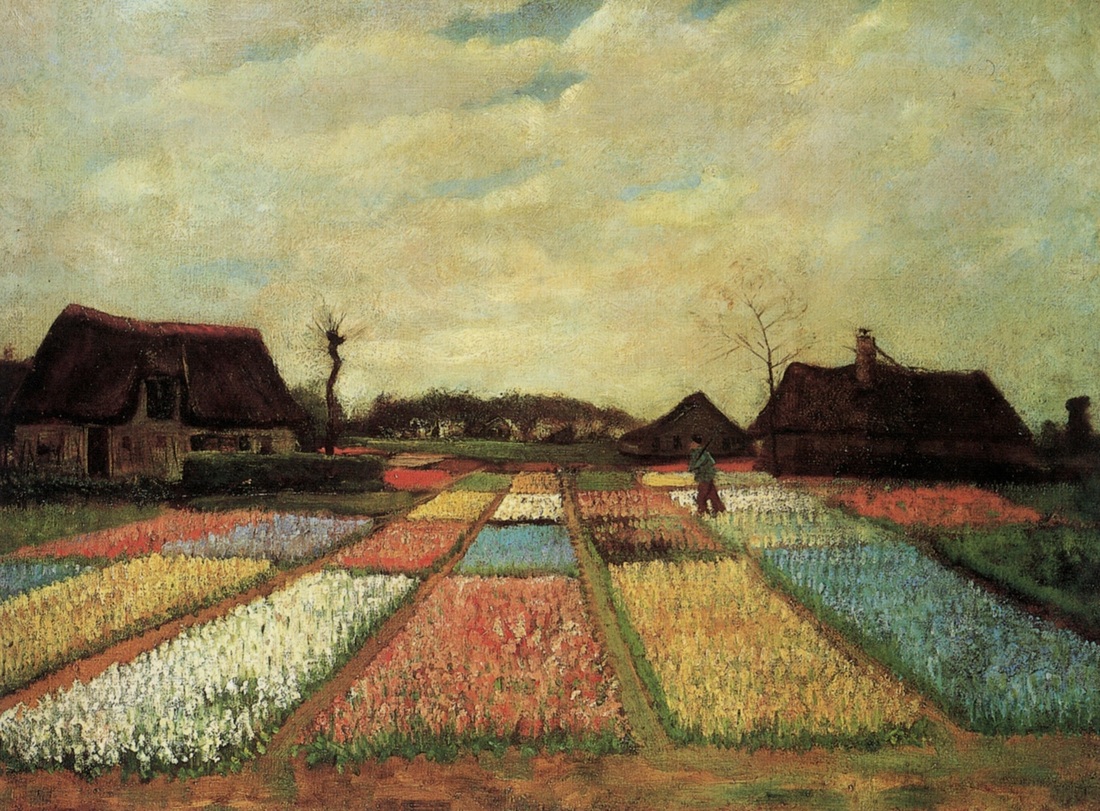|
12/9/2016 Discovery ProjectsIn the spingtime just past, I had this project I imagined curating with all the Iris available in the neighborhood: foraging some and placing them in a antiqued milk pitcher of sorts and photographing it in the spirt of - trying to channel some energy - Van Gogh's "Vase with Irises." When I came accross the work one day, it just struck me: "what are the similarities of our worlds if we each have Iris available in such abundance that we cut them, put them in a vase, and attempt to make representations of the arrangement created?"
This soon lead me to ordering a book on Van Gogh's "complete works," which I first opened one morning at breakfast. What I was looking for was almost a sense of what I see today - where we might imagine Van Gogh as first and formost a floral designer and gardener who struggled to articulate his work through painting representations. Secondly, I was curious. What might we think of in terms of the history of plants and gardening by what Van Gogh had available in the landscape around him. All this tonight as I was going to write a short essay on value. But as I sat here, all of a sudden I was overcome by a certain romatic feeling, a nostalgia for something I was feeling in the springtime. I looked up to my shelf and the book stared at me. I started leafing through and came accross "Bulb Fields" (1833). 12/8/2016 Witch Hazel
I have always found it peculiar that off at the far back end of this parking lot, a hundred feet away from the veiwers eye, is sited a collection of Witch Hazel (Hamamelis). Far from a conventional nursery plant, a unique find in a garden center, although certainly not unheard of. Nichey and collectable for enthusiests, only on rare occasion would it find a space for widespread landscape use. Here a banal location for such a precious plant. I may think this isn't the optimal space to highlight the fine qualities of the Hamamelis being so far from view. What makes the plant delightful to the collector, what creates its enthusiasms, are its up close delicacy; a flower not so much visually brilliant but a treat flowering in Novemeber, December, or Febuary and March depending on the species. Ferncroft and I may chase down a few branches together because of the subtleties to the brown skin of the branches or the clear architectural lines in its lateral branching connections. These small scale qualities show outstandingly in arrangements.
This interests me as I believe it leans towards how "professionals" know their materials - as if knowing, like branch colorings and angles, has different ways of being. In my earlier times I used to attend several trade shows a year. There would always be a "plant expert" from a botanical garden, Cornell, or arboreteum on the schedule talking about "underused plants in the landscape." Witch Hazel would always be on the list. And the images that companioned their talks would all be up close. |
Matthew DoreLandscape designer and Proprietor of Buffalo Horticulture Archives
April 2020
Categories |
Telephone(716)628.3555
|
|



 RSS Feed
RSS Feed